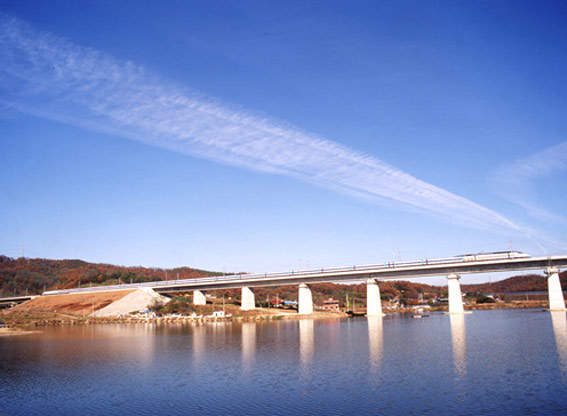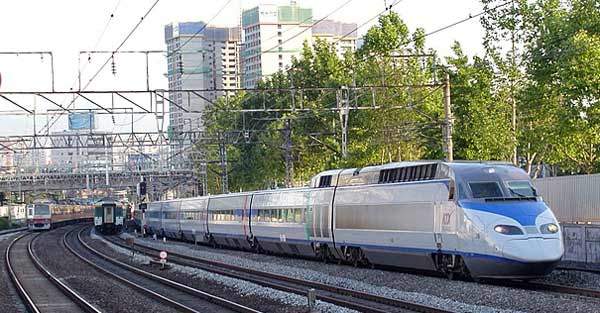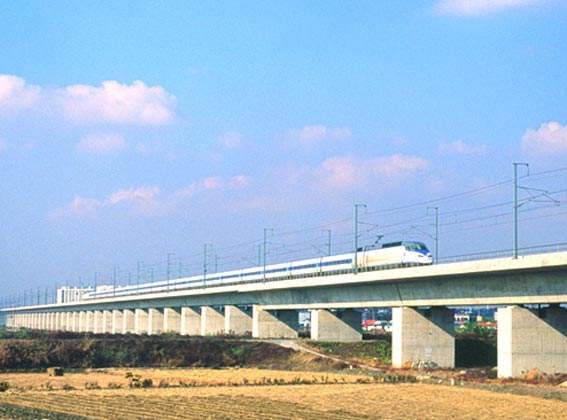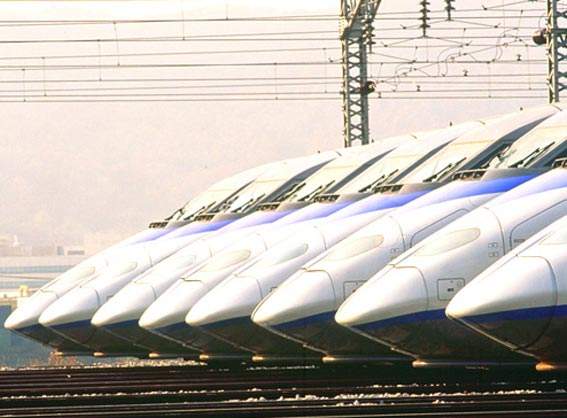The introduction of high-speed trains on the first section of high-speed line in South Korea was not an overnight success. It has, however, since proved itself and has led to plans for a second high-speed line to the port city of Mokpo being brought
back onto the South Korean Government’s agenda.
The Korea Train Express route between Seoul and Busan opened in April 2004 and it has since transformed rail travel from capital city Seoul. Plans for the new line to Mokpo have been shelved for a number of years, but now the South Korea government is
pushing forward with the project, with the aim of starting construction in 2006.
Korea is currently investing heavily in railway technology. A research project to develop 400km/h (250mph) trains has been instigated, hoping to provide even faster journey times. Major spending is taking place across the conventional network to
install double track and further the electrification programme.
THE PROJECT
The high-speed route to Mokpo will share the existing Seoul-Busan tracks to Osong. From there it will head south west for 230km (144 miles) to reach Mokpo, with some sections paralleling the existing conventional Honam railway route, which takes 2hrs
58mins to traverse from Seoul to Mokpo.
The new line will radically reduce journey times. High-speed services will be able to reach Mokpo in 1hr 46mins, partly aided by a shorter route, at an estimated average speed of 181km/h over 320km of new railway.
Construction has been due to start in 2006, with the aim of completing the whole route by 2017, at a cost of around US$11bn.
INFRASTRUCTURE
The Mokpo line will be built in two phases. The first will be between the junction with the Seoul-Busan line at Osong to Kwangju – with completion due by 2015 – and the second phase will complete the route from Kwangju to Mokpo.
In total the new build part of the line will be 230km (144 miles), with the total distance from Seoul to Mokpo being 320km (200 miles). The new route will be 90km shorter than the existing conventional rail line which sees trains cover a total of
410km to reach Seoul from Mokpo.
The line to Mokpo forms part of the South Korea National Rail Network Construction Plan for 2006–15. The objectives for furthering the development of rail travel include reducing road congestion and increasing rail’s share of the passenger
transport market to 12.3% by 2015. This is a massive climb from the 8.6% share in 2002.
Funding for the route to Mokpo has yet to be finalised, although there is the possibility of it being constructed under a build-operate-transfer agreement. Government rules call for up to 65% of the projected cost of high-speed lines to be provided by
the operator.
ROLLING STOCK
South Korea’s first high-speed line makes use of 20-car sets based on the highly regarded French TGV design, with a maximum design speed of 350km/h. However, the South Korea Government is intent on improving the speed and quality of trains, and is
investing heavily in the Korea Railroad Research Institute (KRRI) to develop faster trains.
The latest product to be unveiled by the KRRI is the HSR-350X high-speed electric train, which has been placed as a National Project. Korail and Rotem – operators of the Seoul-Busan line – have already placed an order worth US$306m for ten
ten-car HSR-305X trains to enter service on the conventional line to Mokpo in 2009 and on further routes in 2010.
These new trains – with a maximum speed of 350km/h – are expected to be put into service on the new high-speed line to Mokpo when the first phase opens in 2015.
SIGNALLING AND COMMUNICATIONS
As with the first high-speed line in Korea, automatic train control will be fitted to all trains to monitor speed limits compared with the train’s current speed. In-cab systems will allow equipment to monitor the aspect of each lineside signal, and
the information will be relayed to both the driver and a central control centre.
THE FUTURE
The high-speed line to Mokpo will be another revolution in rail travel for South Korea. Journey times will be cut by almost half to just 1hr 46mins for the fastest train on the 320km route from Seoul.
The route will also contribute toward the South Korea Government’s aim of increasing rail’s share of the passenger travel market, presenting a modern and reliable face to passengers new and old.
Phase one is due to open in 2015, with the complete 230km new section opening in 2017.





